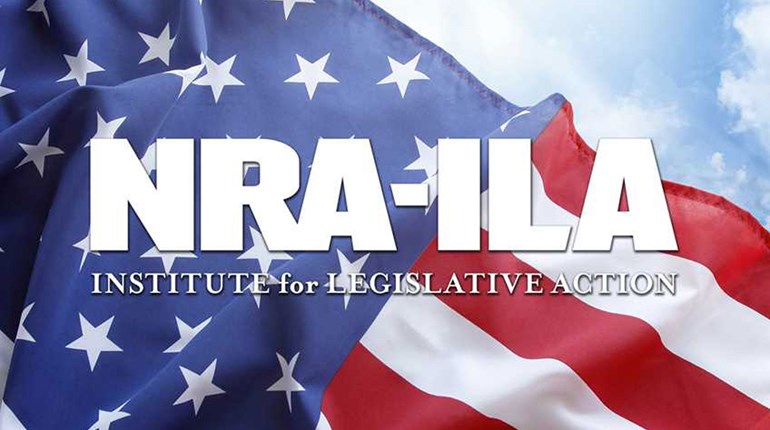
The Bureau of Alcohol, Tobacco, Firearms and Explosives (ATF) recently sent a letter to gun dealers (Federal Firearm License holders, or FFLs) further “explaining” the Biden administration’s arguably unconstitutional new rule on gun frames and receivers.
“The Bureau of Alcohol, Tobacco, Firearms and Explosives (ATF) is issuing this open letter to further assist the firearms industry and the public in understanding whether a ‘partially complete, disassembled, or nonfunctional’ receiver of an AR-15/M-16 variant weapon has reached a stage of manufacture such that it ‘may readily be completed, assembled, restored, or otherwise converted’ to a functional receiver, and is therefore classified as a ‘frame or receiver’ or ‘firearm’ in accordance with the final rule titled ‘Definition of ‘Frame or Receiver’ and Identification of Firearms’ (Final Rule 2021R-05F), which became effective August 24, 2022,” ATF wrote in a longwinded opening statement explaining the letter.
The letter, which seems to be a classic case of making up the rules as you go, revolves around what many refer to as “80% receivers.” According to the letter, however, ATF doesn’t use that term, nor does it recognize any significance in it. The ATF’s analysis as to how the new rule impacts such items primarily focuses on the word “readily,” which the agency says, “examines how efficiently, quickly and easily a clearly identifiable component part of a weapon can be completed, assembled, restored or otherwise converted to house or provide a structure for the applicable fire control component.”
“Thus, in order not to be considered ‘readily’ completed to function, ATF has determined that a partially complete AR-type receiver must have no indexing or machining of any kind performed in the area of the trigger/hammer (fire control) cavity,” the letter states. “A partially complete AR-type receiver with no indexing or machining of any kind performed in the area of the fire control cavity is not classified as a ‘receiver,’ or ‘firearm,’ if not sold, distributed or marketed with any associated templates, jigs, molds, equipment, tools, instructions or guides, such as within a receiver parts kit.”
The associated picture in the letter shows a receiver with no holes or dimples for the selector, trigger, or hammer pins, with a caption saying it is not a “firearm,” “if not sold, distributed or marketed with any associated templates, jigs, molds, equipment, tools, instructions or guides.”
Further, the ATF letter explained that to not be considered a “firearm,” the trigger/hammer area of the lower receiver must be solid. If a trigger slot has been created in the receiver, it is considered a “firearm,” regardless of whether it meets the other criteria to not be a “firearm.”
The letter further stated that even a receiver meeting the criteria as not being a “firearm” can be reevaluated if the person making it sells other “items” that can be used to “readily” make it into a “firearm.”
“Pursuant to Final Rule 2021R-05F, partially complete, disassembled, or nonfunctional frames or receivers that are sold, distributed, possessed with such items (or made available by the seller or distributor to the same person) may change the analysis, including those distributed as frame or receiver parts kits. 27 CFR 478.12(c),” the letter stated. “For example, jigs, templates or instructions can provide the same indexing as if it were placed directly on the unfinished frame or receiver.”
Lastly, the ATF warned against trying to skirt the rule as explained, writing in a passage underlined for emphasis: “It is important that persons engaged in the business of manufacturing, importing, or dealing in these items do not take any steps to avoid licensing (18 U.S.C. §§ 922(a)(1), 923(a)), serialization (§ 923(i); 27 CFR 478.92(a)(2)), recordkeeping (§ 923(g)(1)(A); 27 CFR 478/125(i)), and other requirements and prohibitions of the law by selling or shipping the parts or parts kits in more than one box or shipment to the same person, or by conspiring with others to do so (18 U.S.C. §§ 2, 371).”
In the end, the Biden administration pushed the ATF into skirting Congress and making a confusing, arguably unconstitutional new rule in order to solve a non-existent “problem”—President Joe Biden’s (D) hatred for so-called “ghost guns.” It’s likely that the ATF’s recent letter, signed by Acting Assistant Director of Enforcement Programs and Services Andrew Graham and Acting Assistant Director of Field Operations William Henderson, will leave more people confused than it did answer important questions. And it’s equally possible that might have been the purpose, as FFLs and gun purchasers are likely to stay away from even legal products to avoid the agency’s wrath over the complicated and cumbersome regulations.
Those interested in selling and purchasing partial receivers would be wise to read the ATF letter carefully to keep from running afoul of the new rule—if they are even able to completely decipher it--however misguided it might be.


































